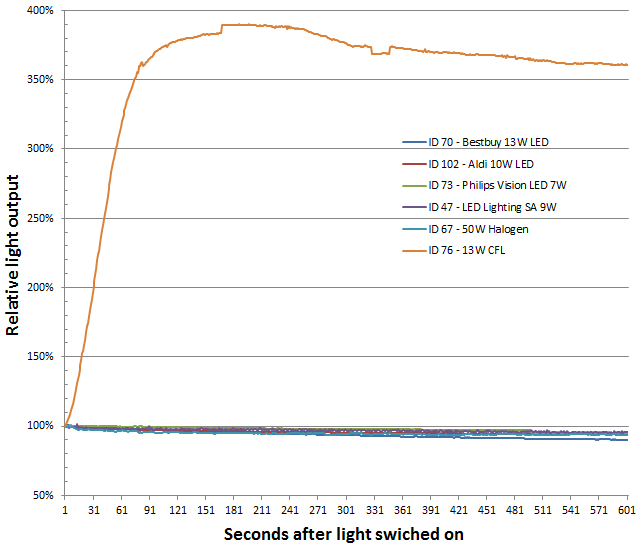FAQ - Comparision of LED and CFL light warm up times
LED globes become more inefficient as they get hotter, eventually failing if they get too hot. Compact fluorescent lamps (CFL) initially have very low output just after being switched on, but their output improves dramatically as they get warmer, at least up to a certain point. CFL lights will fail to switch on at all if they are too cold.
The graph below compares normalised light output for a 10min period after a various globes are switched on with an ambient air temperature of 24C.

The LED lights and halogen show slightly decreased output, while the CFL shows a massive rise in output. Zooming right in on the graph below can be seen that LED #70 was the worst performer, eventually stabilising at 82% output after 25min.

Although somewhat of a generalisation, the hotter the LED globe runs, the larger the falloff in output that can be expected. It should also be noted that a gradual decrease of light output by 10% will not be noticed by most people. It is expected that the fall off would be even more noticeable in situations where the LED globe is installed in a confined space or with a higher ambient air temperature. Conversely they should perform better in cold areas.
| Globe | Globe type | Stabilisation time | Final output |
| ID 70 | LED | 25min | 82% |
| ID 102 | LED | 23min | 92% |
| ID 73 | LED | 21min | 95.5% |
| ID 47 | LED | 20min | 92.5% |
| ID 67 | Halogen | 5min | 94% |
| ID 76 | CFL | 8min | 363% |
Back to FAQ index